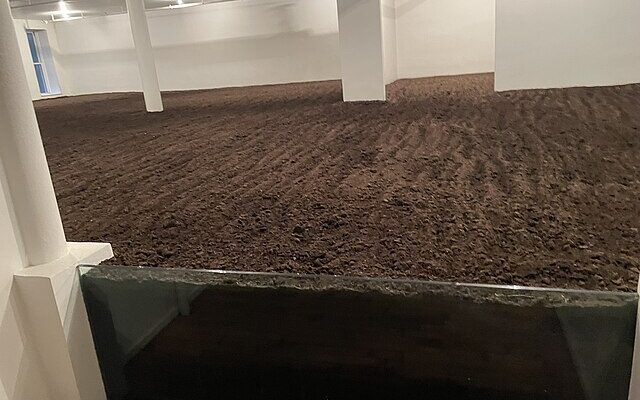
In the heart of SoHo, up a narrow stairwell on Wooster Street, lies one of New York City’s most quietly radical artworks: The New York Earth Room. Spanning 3,600 square feet and filled with 280,000 pounds of rich, dark soil layered two feet deep, the installation has beckoned visitors into its loam-scented stillness since 1977. Created by conceptual artist Walter De Maria, the work has long been sustained by a kind of devotion seldom visible in the art world—until now, writes Smithsonian.
For more than three decades, that devotion had a name: Bill Dilworth. From 1989 until his death in December at age 70, Dilworth—an abstract painter by training—served as the Earth Room’s quiet guardian, watering, raking, and occasionally weeding the soil (sometimes even sampling the mushrooms that sprouted from its depths). “Just to get it back to this moist state is gratifying to me,” Dilworth told The New Yorker back in 2023. “Because this is the state that I relate to, that I maintained for decades.”
His unlikely stewardship began, as he told Artsy in 2016, with a glimpse over the shoulder of a friend: “I was with my friend who was the building operations guy at Dia and he had to look at these pipes for something. Over my shoulder, I saw the guy at the desk here and afterwards I asked my friend Jim, ‘Does that job ever open up?’ And he said no. Two months later, it did.”
Dilworth’s roots stretched from Detroit—where he was born in 1954 and studied at Wayne State University—to New York’s Lower East Side, where he also tended the clock at the Church of St. Teresa. His business card read “The Keeper of Earth and Time,” a moniker that encapsulated both his precision and his poetry. He tracked Earth Room visitors in a notebook with glyph-like strokes that resembled musical rests—quiet marks for a quiet room.
The Earth Room, maintained by the Dia Art Foundation, is not a static sculpture but a living presence that demands attention. When the soil settles below De Maria’s specifications, it must be topped off. The installation’s austerity belies its complexity. As one visitor laughed after several silent minutes, or a pre-med student changed her major to soil science, the room continued to work its subtle transformations.
“It’s about earth, art and quiet,” Dilworth said. “People look at it, and they think nothing’s growing, and I say, ‘Look at it again, time is growing out there.’”
As his final act of caretaking, Dilworth trained his successor, 28-year-old artist Dana Avendano, and presented her with a new rake—his version of a torch passed. Though Dilworth’s death from a stroke on December 10 was little publicized, the soil he tended endures as both shrine and sculpture, still drawing those who seek silence, still growing time.









